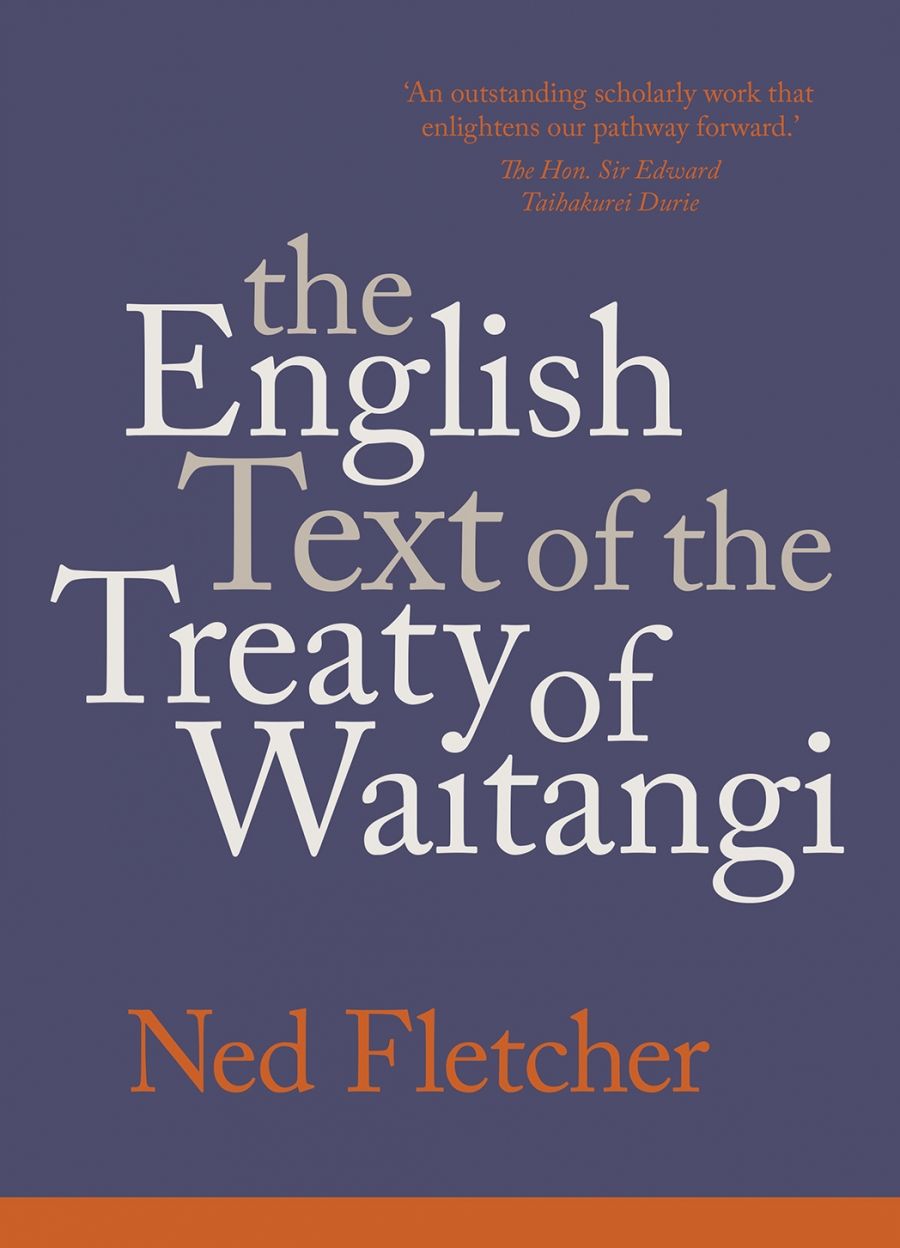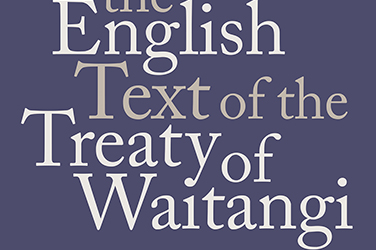
- Free Article: No
- Contents Category: New Zealand
- Review Article: Yes
- Article Title: Looking across the ditch
- Article Subtitle: History-making and foundational history
- Online Only: No
- Custom Highlight Text:
Across the past fifty or more years, indigenous peoples in Australia, Canada, and New Zealand have increasingly made political and legal claims about sovereignty and land. As this has occurred, numerous scholars in a broad range of disciplines – especially law and history – have tried to explain how these two matters were dealt with by the British empire in the seventeenth, eighteenth, and nineteenth centuries. Often that work has been done in the hope that it will bolster the indigenous peoples’ claims or redeem the settler societies whose legitimacy has been drawn into question because of their unjust treatment of First Peoples.
- Featured Image (400px * 250px):

- Alt Tag (Featured Image): Bain Attwood reviews 'The English Text of the Treaty of Waitangi' by Ned Fletcher
- Book 1 Title: The English Text of the Treaty of Waitangi
- Book 1 Biblio: Bridget Williams Books, NZ$69.99 hb, 732 pp
Ned Fletcher’s book is a foundational history par excellence. He seeks to persuade us that the Treaty was the legal basis upon which the British Crown claimed possession of the islands of New Zealand in 1840. He contends that those responsible for the drawing up of its English text regarded Māori as a fully sovereign people and owners of all the land, and conceived of the Treaty as a legal agreement by which the British Crown acquired only as much sovereignty as it required to assume authority over its own people and protect the rights and privileges of Māori and guaranteed to them not only title to every acre of the country’s land but ongoing authority to govern themselves. He also holds that those same historical actors regarded the Treaty as constituting the foundations of the (nascent) New Zealand nation. This argument chimes with the legal, political and historical interpretation of the Māori text of the Treaty currently dominant in New Zealand while a claim by Fletcher that the Treaty’s Māori and English-language texts ‘reconcile’ has been hailed by his publisher as a means of resolving present-day conflict between Māori and Pākehā over sovereignty and governance and thus unifying the nation, despite the fact that he does not examine the Māori text in his book.
Fletcher sets about his task as though he has been handed a legal brief. (He is a lawyer by profession, has been a Crown prosecutor, and this book is a revised version of a PhD thesis in law.) He makes point after point to advance his case; adduces practically all the relevant historical sources and cites at great length those parts of them that seem to support it; painstakingly rebuts each and every argument contrary to his own, or at least those he finds useful to acknowledge; omits any thorough consideration of important points that tend to undermine the cogency of his argument; and neglects to discuss in any thoroughgoing way those parts of the historical record that draw his claims into question. By using these tricks, he might well convince unwitting readers.
But Fletcher’s argument is badly flawed. In large part this is because it rests on a series of dubious assertions or assumptions that he does not seek to test and which obscure several awkward historical facts. Soon after making the Treaty, the British Crown claimed possession of New Zealand (or parts of it) on grounds other than the Treaty, including the legal doctrine of discovery. The imperial government sought to assume sovereignty by making an agreement with many local chiefs, even though it regarded them as neither fully sovereign nor owners of all the land. It did so for reasons that were as much diplomatic and political as they were legal and moral, and so were inherently pragmatic rather than simply principled in nature. It instructed its agent to make a treaty that only had two conditions: the Māori were to cede sovereignty to the British Crown as well as the pre-emptive (that is, sole) right to purchase land. There is no evidence to suggest that it envisaged the agreement that was subsequently made with some of the chiefs as one that was meant to provide the basis for the colony’s legal and political arrangements at the time, let alone in the future.
Fletcher’s argument also rests on three especially problematic claims: that the meaning of any text such as the Treaty of Waitangi can be discovered merely by considering the purpose or intent of those who are said to be its authors, rather than contemplating how that text was received, not least by Māori; that the meaning that might have been bestowed on the Treaty at the time it was made, rather than the discussion and debate that has taken place about it since, best accounts for its historical significance in the sense of both meaning and importance; and that the original (1840) understanding of the Treaty is more important than any later understandings of it, historically speaking. None of these propositions can withstand critical scrutiny. They reveal a loss of perspective about the making of the Treaty in 1840 that characterises much of the historical discussion and debate about it.
Fletcher’s account is also unsatisfactory because he fails to engage with and thus alert lay readers to the most important historical scholarship of the last twenty or so years that draws his argument into question and/or undermines his publisher’s claim that this book is a ground-breaking scholarly contribution to understanding of the Treaty of Waitangi. This tome is undoubtedly a prodigious piece of research, but in seeking to account for the British government’s purpose in making the Treaty, its author is unwilling or unable to distinguish the wood from the trees. The result is a remarkably turgid work, the publication of which is somewhat puzzling, given its publisher has an enviable reputation for presenting a good deal of New Zealand’s finest historical scholarship to lay audiences.


Comments powered by CComment